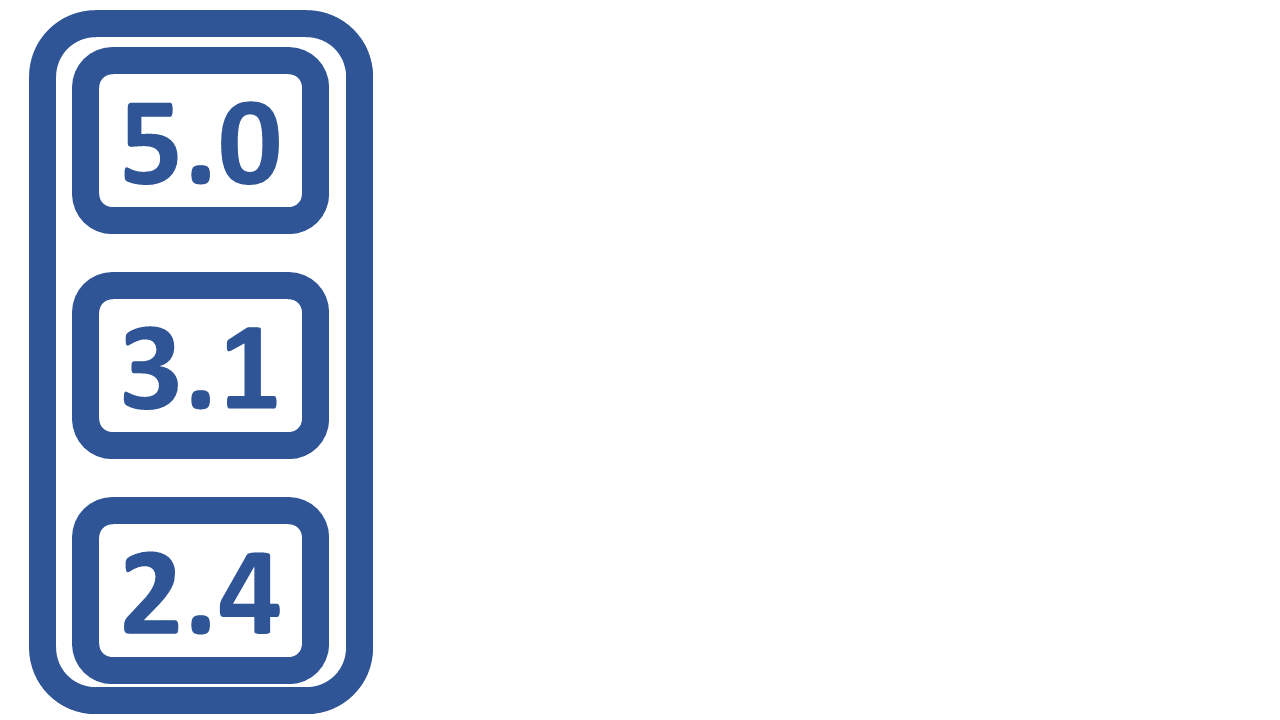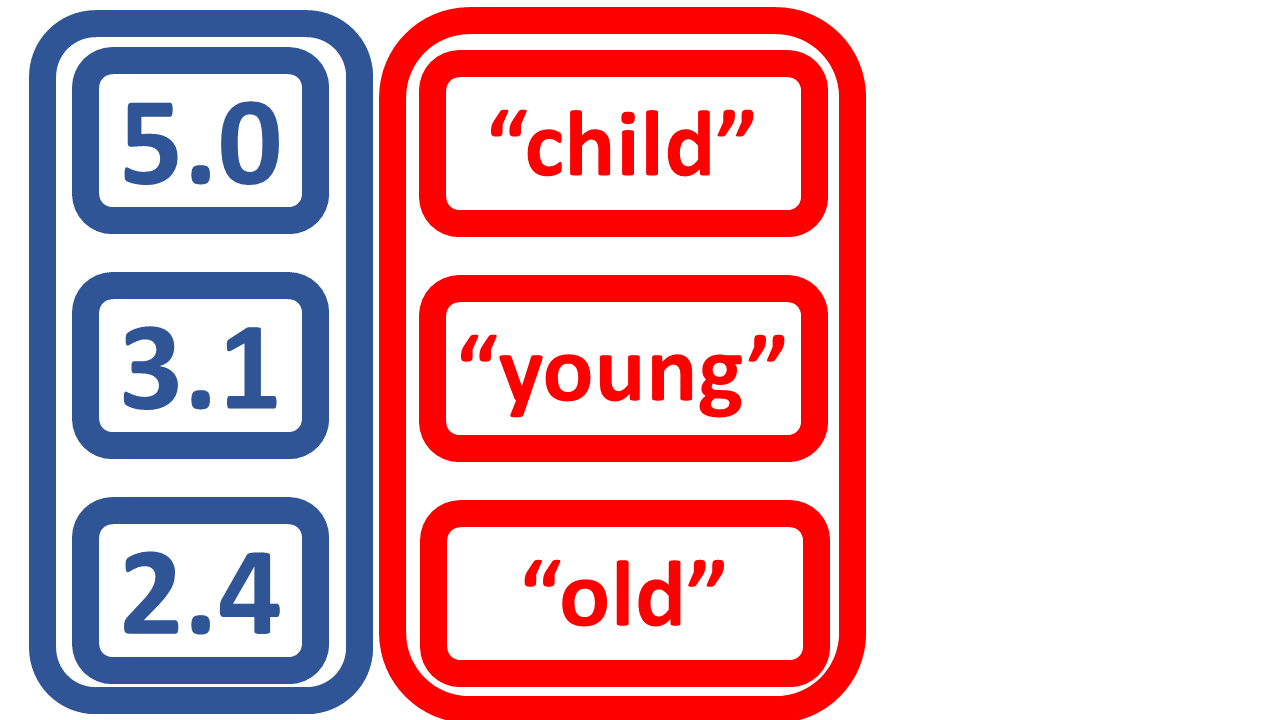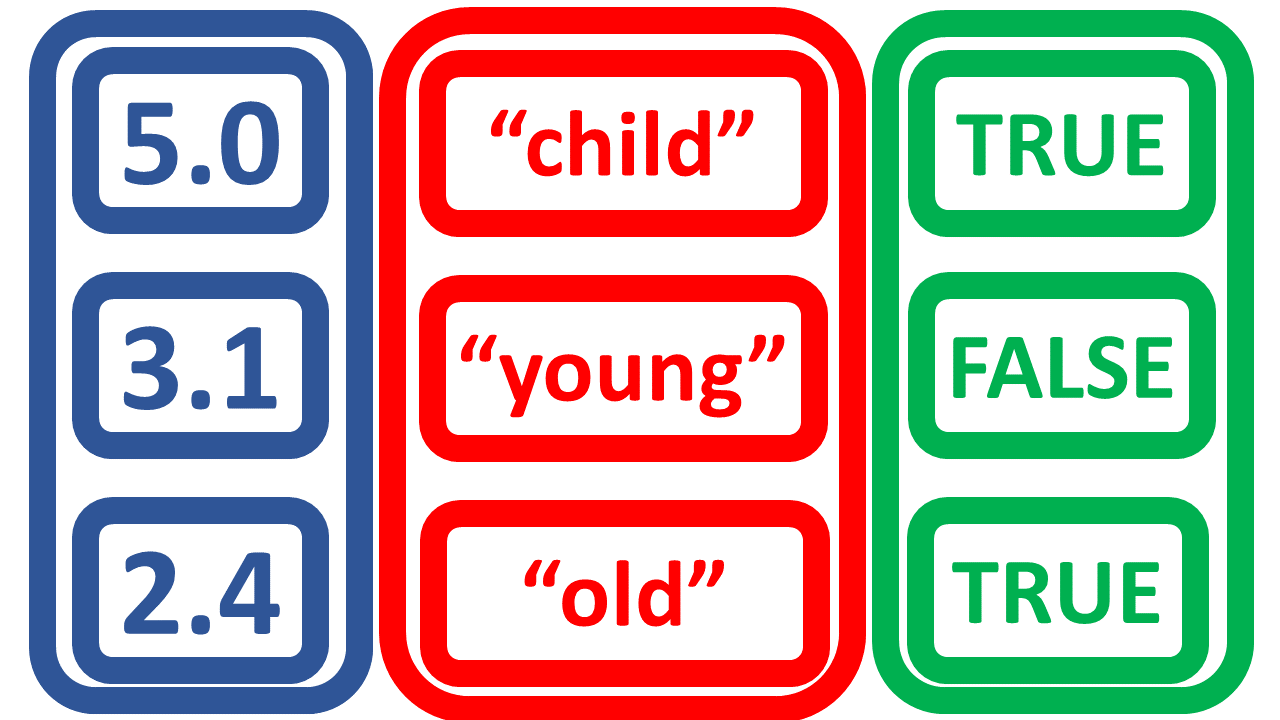Objects - the building blocks of R
R For SAS Users

Melinda Higgins, PhD
Research Professor/Senior Biostatistician Emory University
Objects are the building blocks of R
- Everything in R is an object
- Single values (scalars)
- Vectors
- Matrices
- Datasets
- Output from functions
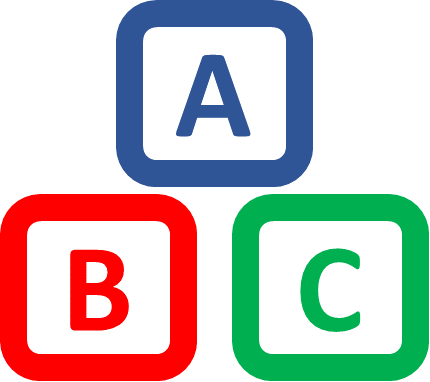
Work with single elements
- Create object
x - Assign value of 4 to
x - View contents of
x [1]indicatesxhas 1 element- Create
yas square of x - View result, type
y
x <- 4
x
[1] 4
y <- x * x
y
[1] 16
Other types of elements
- Assign the word "fish" to
y - Assign the logical value
FALSEtoz - View
yandz
y <- "fish"
z <- FALSE
y
z
[1] "fish"
[1] FALSE
Combine single elements into a vector
# Combine three numbers
c(5, 3, 2)
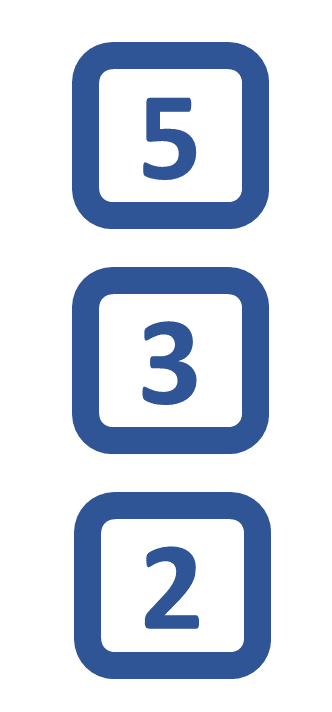
Combine single elements into a vector
# Assign numeric vector to x
x <- c(5, 3, 2)
# View result
x
Result
[1] 5 3 2
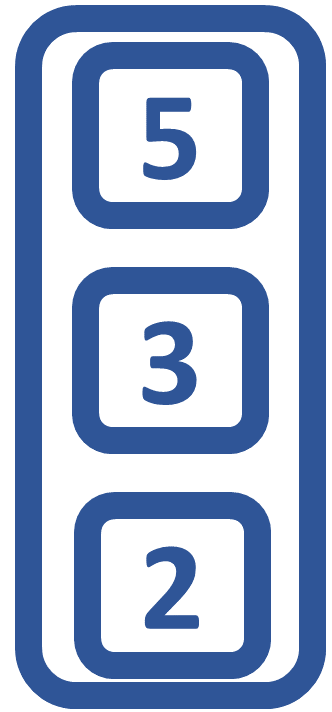
Create vector of character elements
# Add word child into character vector
y <- c("child")
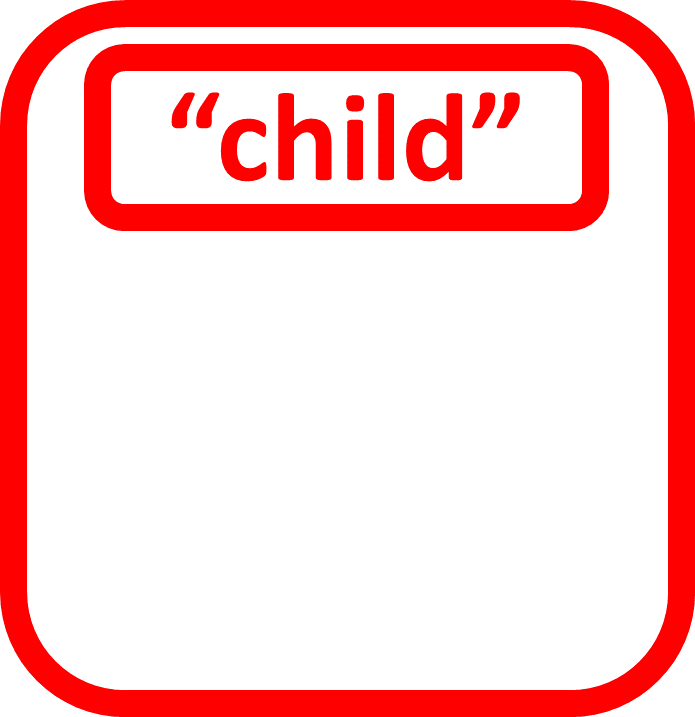
Create vector of character elements
# Add second word young
y <- c("child", "young")
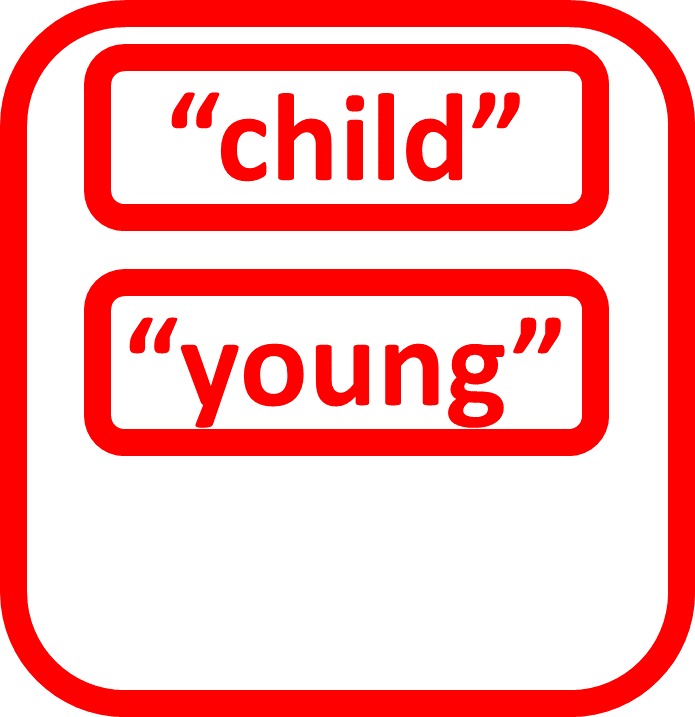
Create vector of character elements
# Add third word old
y <- c("child", "young", "old")
# View y
y
Result
[1] "child" "young" "old"
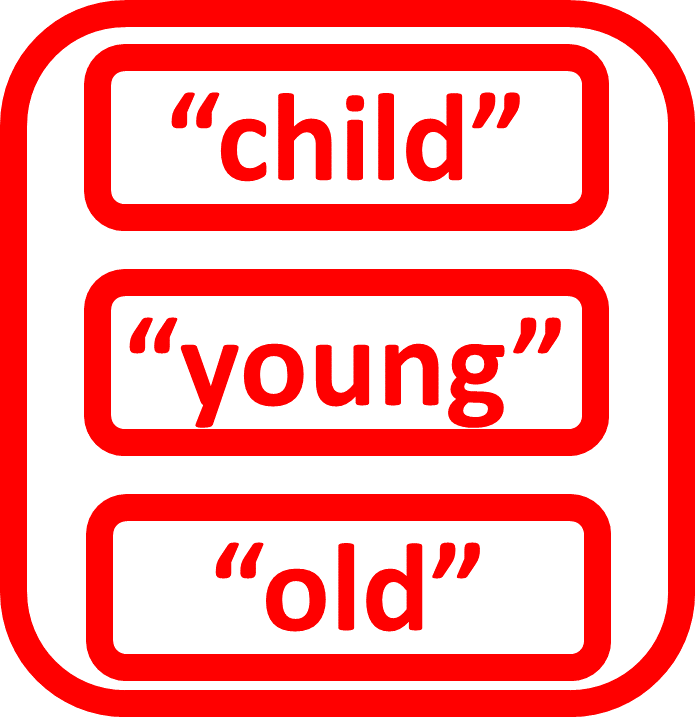
Create vector of logical elements
# Add TRUE into logical vector
z <- c(TRUE)
- First element is
TRUE - No double quotes needed
- Logical elements are
TRUEorFALSE ALL CAPSmust be usedTandFmay also be used
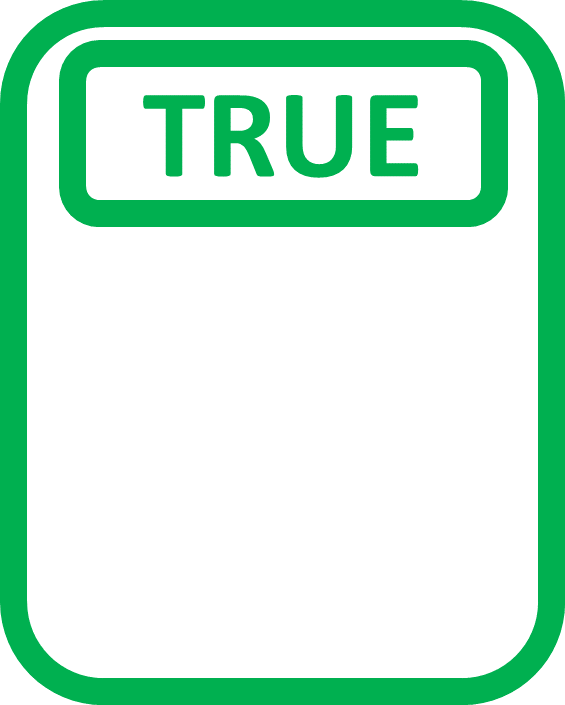
Create vector of logical elements
# Add FALSE as second element
z <- c(TRUE, FALSE)
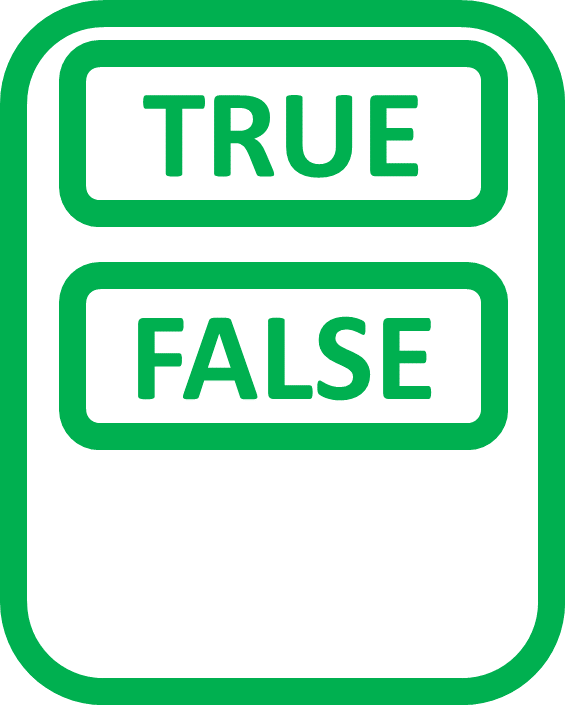
Create vector of logical elements
# Add third element TRUE
z <- c(TRUE, FALSE, TRUE)
# View z
z
Result
[1] TRUE FALSE TRUE
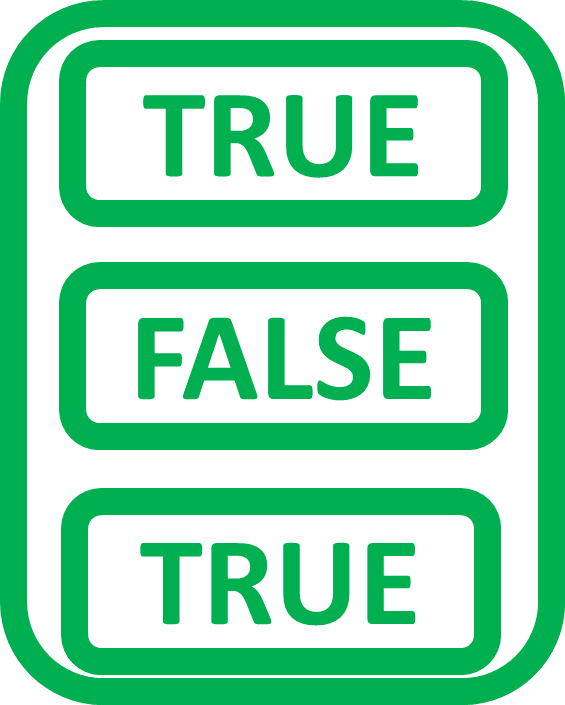
Create matrix from vectors
# Create numeric vector a
a <- c(5.0, 3.1, 2.4)
- Matrix created from vectors
- Vectors must be same type and length
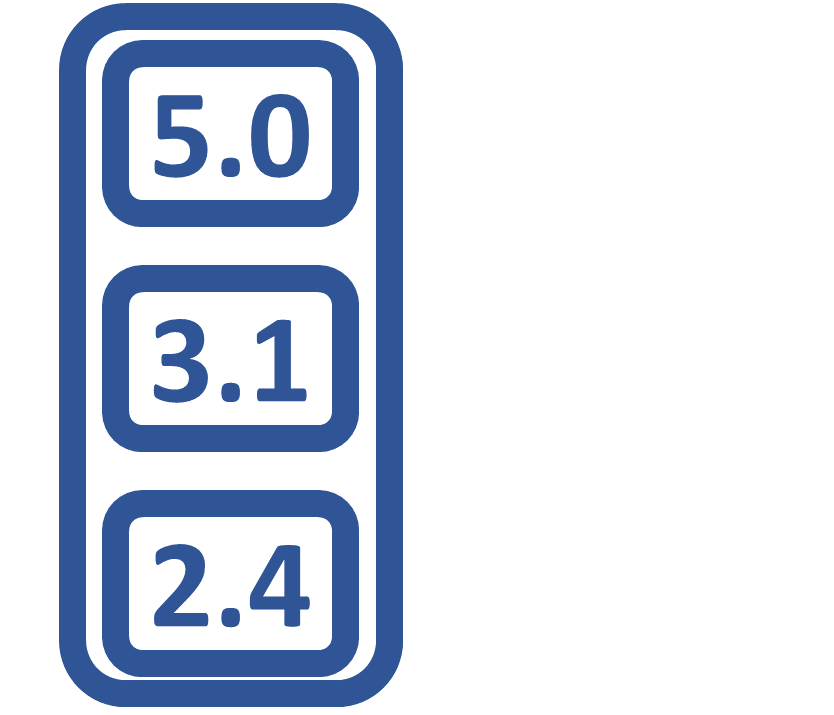
Create matrix from vectors
# Create numeric vector a
a <- c(5.0, 3.1, 2.4)
# Create numeric vector b
b <- c(4.1, 2.2, 5.4)
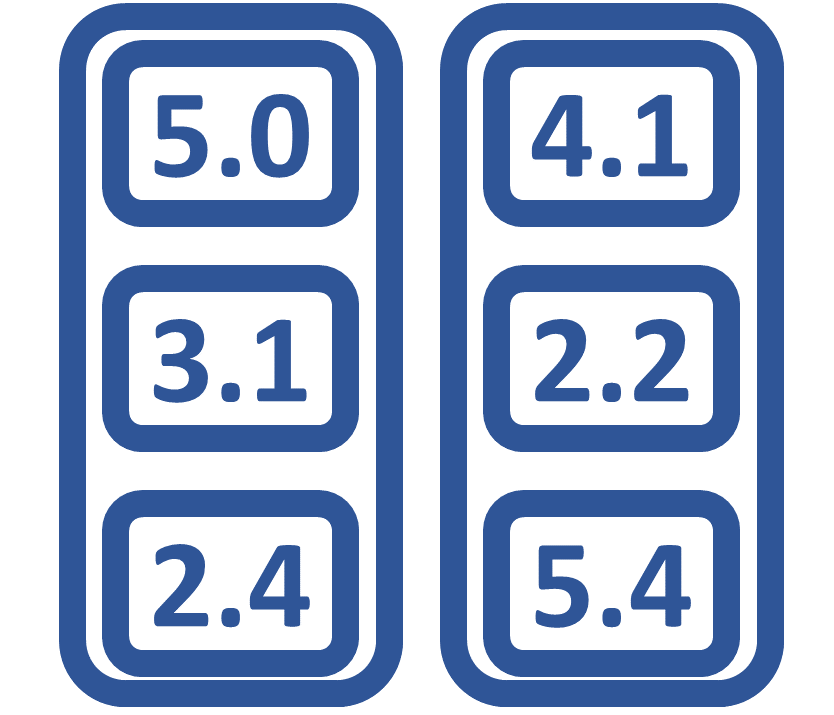
Create matrix from vectors
# Make m from a,b with 3 rows 2 columns
m <- matrix(c(a, b),
nrow = 3,
ncol = 2)
# View m
m
[,1] [,2]
[1,] 5.0 4.1
[2,] 3.1 2.2
[3,] 2.4 5.4
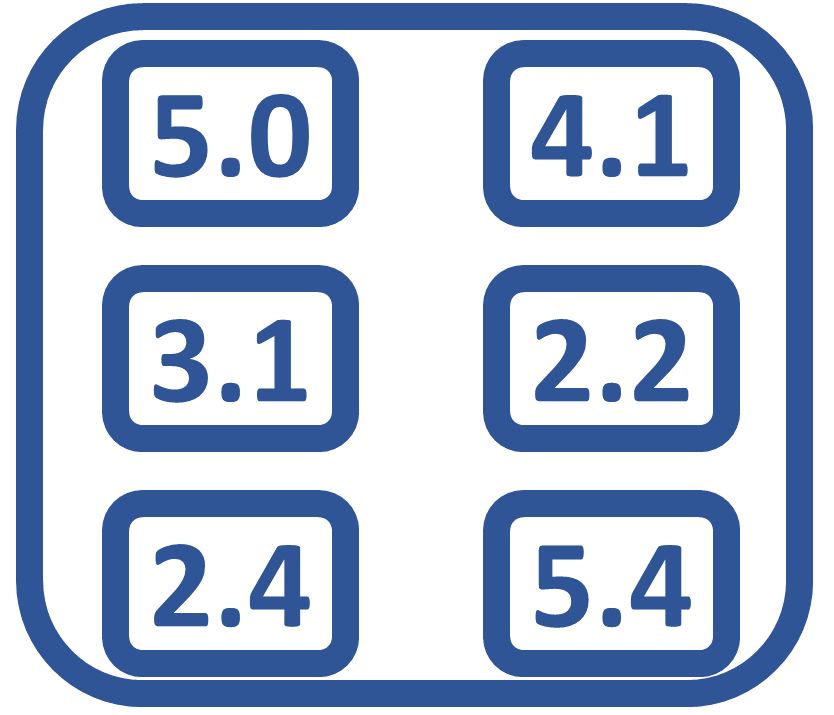
Create data frame from vectors
# Create numeric variable score
score <- c(5.0, 3.1, 2.4)
# View score
score
5.0 3.1 2.4
- Data frames created from vectors
- Vectors must be same length
- Vectors can be different types
Create data frame from vectors
# Create character variable age
age <- c("child","young","old")
# View age
age
"child" "young" "old"
Create data frame from vectors
# Create logical variable test
test <- c(TRUE, FALSE, TRUE)
# View test
test
TRUE FALSE TRUE
Create data frame from vectors
# Combine to create data frame
d <- data.frame(score, age, test)
# View data frame
d
score age test
5.0 child TRUE
3.1 young FALSE
2.4 old TRUE
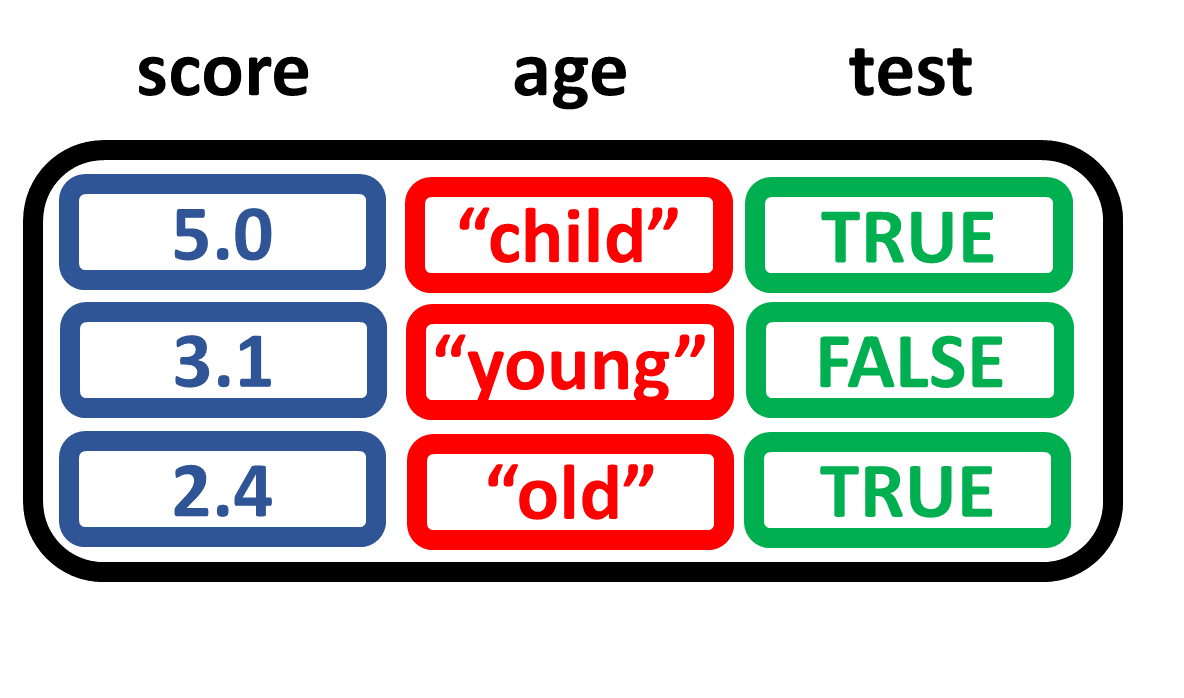
Determine object type
- Create numeric vector
x - Determine the
classofx - Look at structure
strofx
x <- c(5, 3, 2)
class(x)
[1] "numeric"
str(x)
num [1:3] 5 3 2
Determine object type
- Character vector
y; logical vectorz - Determine the
classofyandz - Look at structure
strofyandz
str(y)
chr [1:3] "child" "young" "old"
str(z)
logi [1:3] TRUE FALSE TRUE
y <- c("child","young","old")
z <- c(TRUE, FALSE, TRUE)
class(y)
[1] "character"
class(z)
[1] "logical"
Determine object type
- Make matrix
m - Get class of
m - See structure
strofm
str(m)
num [1:3, 1:2] 5 3.1 2.4 4.1 2.2 5.4
a <- c(5.0, 3.1, 2.4)
b <- c(4.1, 2.2, 5.4)
m <- matrix(c(a, b),
nrow = 3,
ncol = 2)
class(m)
[1] "matrix"
Determine object type
- Create
data.framed - Get
classofd - See structure
strofd
str(d)
'data.frame': 3 obs. of 3 variables:
$ score: num 5 3.1 2.4
$ age : Factor w/ 3 levels
"child","old",..: 1 3 2
$ test : logi TRUE FALSE TRUE
score <- c(5.0, 3.1, 2.4)
age <- c("child","young","old")
test <- c(TRUE, FALSE, TRUE)
d <- data.frame(score, age, test)
class(d)
[1] "data.frame"
1 The Factor class type was created here automatically for the 3 age categories.
Let's create and manipulate data objects in R
R For SAS Users
